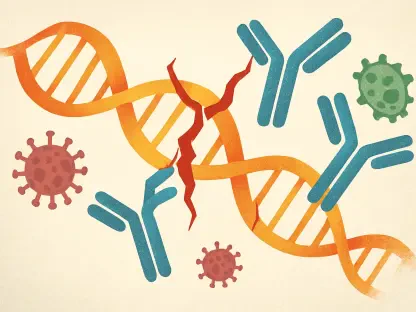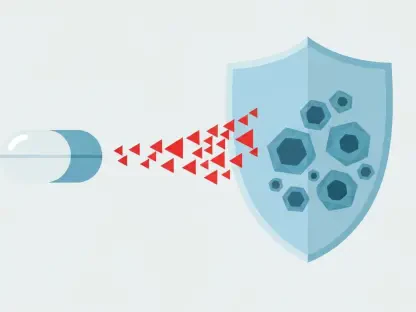Per-and polyfluoroalkyl substances (PFAS) are synthetic chemicals that have been widely used since the 1940s due to their resistance to degradation. This characteristic has led to their persistent accumulation in the environment, particularly in drinking water. Recent research has raised concerns about the potential health risks associated with PFAS exposure, including an increased risk of cancer, sparking debates and pushing for in-depth studies to understand the implications.
Understanding PFAS and Their Prevalence
PFAS are found in a variety of consumer products, including non-stick cookware, water-repellent clothing, and firefighting foams, among others. Their widespread use and persistence in the environment have resulted in detectable levels of PFAS in nearly half of the U.S. water systems. Urban areas and locations near industrial sources, in particular, bear the brunt of this contamination, raising alarm bells about the long-term exposure effects.
The primary route of human exposure to PFAS is through drinking water, posing a direct threat to public health. Studies have shown that PFAS can disrupt endocrine functions, cause epigenetic changes, and induce oxidative stress, all of which can contribute to cancer development. Despite these compelling findings, much of the existing research has been limited in scope and often not specific to U.S. data, underscoring the need for more comprehensive and localized studies to assess the actual risks posed by PFAS exposure in U.S. communities.
The Study: Linking PFAS to Cancer Incidence
A recent study published in the Journal of Exposure Science & Environmental Epidemiology aimed to explore the association between PFAS contamination in U.S. drinking water and increased cancer risks across multiple organ systems. The researchers accessed cancer incidence data from the U.S. National Cancer Institute’s (NCI) Surveillance, Epidemiology, and End Results (SEER) program, which provides extensive coverage by documenting cancer statistics for about half the U.S. population through 22 registries.
The study analyzed data from 2016 to 2021, focusing on age-adjusted cancer rates per 100,000 individuals for various counties. To understand sex-specific differences in cancer risk, the researchers also examined incidence rates distinct to males and females. PFAS data were sourced from the U.S. Environmental Protection Agency’s (EPA) Unregulated Contaminant Monitoring Rules (UCMR3 for 2013-2015 and UCMR5 for 2023-2024), offering detailed insights into PFAS levels in public water systems and revealing the degree of exposure across different populations.
Key Findings: Increased Cancer Risks
The study uncovered significant associations between PFAS exposure in drinking water and heightened incidences of several types of cancer. Digestive system cancers, such as colorectal and liver cancers, were notably linked to the presence of PFBA and perfluorohexanesulfonic acid (PFHxS). Additionally, endocrine system cancers, particularly thyroid cancer, displayed higher risks associated with perfluorononanoic acid (PFNA) and perfluoroheptanoic acid (PFHpA).
Further, oral cavity and pharynx cancers were linked to perfluorobutanesulfonic acid (PFBS), while respiratory cancers, including lung cancer, were associated with PFBA and perfluorooctanoic acid (PFOA) exposure. These correlations illustrate the multifaceted impact of PFAS on the body’s organs, confirming the carcinogenic potential of these chemicals upon prolonged exposure. Interestingly, PFBA detection was inversely correlated with risks of skin cancer and leukemia, although the biological basis for these findings remains uncertain and warrants further investigation.
Sex-Specific Differences in Cancer Risk
Intriguingly, the study revealed significant sex-specific differences in cancer risk associated with PFAS exposure. Males exhibited higher risks for cancers affecting the urinary system, brain, leukemia, and soft tissues, correlating to PFAS presence in drinking water. Such findings suggest a pronounced vulnerability among men, potentially linked to occupational exposures or lifestyle factors that enhance PFAS absorption and retention in specific bodily systems.
In contrast, females showed a stronger association with thyroid, oral cavity/pharynx, and soft tissue cancers. These differences point to potential interactions between PFAS exposure and sex-specific factors such as hormonal balance or metabolic variations. Understanding these interactions is crucial for developing targeted health interventions and policies to mitigate the risks, highlighting the need for gender-specific approaches to address varying susceptibilities and exposure pathways among different population segments.
Public Health Implications
Per-and polyfluoroalkyl substances (PFAS) are man-made chemicals that have gained widespread use since the 1940s due to their impressive resistance to breaking down. This resistance has caused them to linger in the environment, building up over time, especially in drinking water sources. Their persistence has raised significant health concerns. Recent studies have pointed out potential health risks linked to PFAS exposure, including a heightened risk of cancer. These findings have sparked debates and have led to calls for more extensive research to fully understand the health consequences of PFAS. Discussions are ongoing regarding their regulation and the need for developing technologies to remove these substances from the environment, particularly from drinking water supplies. As awareness grows, so does the push for policymakers to take action in order to mitigate these risks. Overall, the presence of PFAS in the environment remains a pressing issue that demands thorough investigation and immediate action to protect public health.









